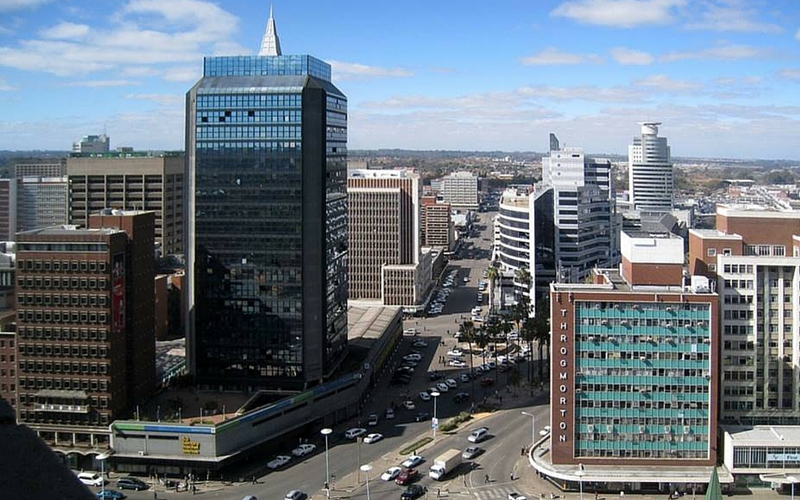
10 Numbers That Tell Zimbabwe’s Story
- Land Reform and Indigenization
All black people are better off in 2018 than they were in 1979 under the brutal Smith regime. In 2018, the Zimbabwean Tobacco Industry & Marketing Board (TIMB) reported Zimbabweans made history with a tobacco yield of 237.1 million kilos of tobacco sales breaking the record set in the year 2000 of 236 million kg. In 2000, 4,000 white farmers produced 85% of the tobacco. In 2017, 81,000 African farmers grew tobacco and in 2018, a whopping 110,000 farmer’s bumper harvest created the second largest export for Zimbabwe.
Zimbabweans made history with a tobacco yield of 237.1 million kilos of tobacco sales breaking the record set in the year 2000 of 236 million kg
Today Zimbabwe boasts of having its first billionaire Strive Masiyiwa something which would have been unheard of in 1979 under the Smith regime. Today, the largest private employer is Econet a company started by an black Zimbabwean. Today Zimbabweans has many more millionaires.
- Citizen Net worth
Wealth is measured by net worth of the citizens of a country. Western countries success or failure is judged on net worth of individuals for which Forbes magazine compiles an annual list. African countries on the other hand suffer the indignity of being judged on living on a $1 a day is quite a misleading statistic because there is no nation on earth that does not have poor people. In 2018, all Zimbabweans have a higher net worth than they prior to 1980 under the brutal colonial smith regime. Credit Suisse estimates that the mean wealth of an adult in Zimbabwe is $3,640 (USD).
- Home ownership
In 1980, Africans owned very few properties in the cities and had to carry passports known as ‘passes’ to justify their presence in cities and in the land of their ancestors. City ordinances and country laws did not allow home ownership by Africans. In 1980, less than 1% of Africans owned homes in urban areas in Zimbabwe. In 2018, thousands of Zimbabweans own their own outright with some even owning multiple homes.
- Land ownership
Thanks to the Land Apportionment Act of 1930 black Zimbabweans were forced off arable farmland into concentration camps known as ‘reserves’ that could not sustain agriculture. In 1980, foreign whites owned 95% of the land. In 2000, when land reform started; foreigners still owned more than 70% of the arable farmland and this was 20 years after independence. It is estimated that black Zimbabweans own 96% of the agricultural land. This excludes company, church and corporate estates (2,041 million hectares) and transitional/unallocated land (2,684 million hectares) (ZimFact.org).
- GDP
In 1977 under colonial rule and when the country was known as Rhodesia GDP was only $4.364BN with a growth rate of -6.2%. At independence in 1980, the country’s GDP was $6.679BN. Before Zimbabwe adopted structural adjustment program (SAP) at the advice of the IMF GDP was at 8.641BN and plummeted to $6.402BN in 1998. In 2016, Zimbabwe’s GDP is now an estimated $17.11BN (CIAFactbook, 2017).
- Poverty levels
All natural resources were owned by foreign colonialists in 1980 at the time when black people gained their independence. Africans did not own a single mine or have access to the ownership of these natural resources. Zimbabwe’s Great Dyke produces gold, silver, emeralds and many other precious stones. Africans owned 0% at independence and today black Zimbabweans own mines which is a step in the right direction. Zimbabwe’s inflation rate is currently 2.6%.
- Failure of Economic structural Adjustment Program
The IMF provided guidance to the Mugabe government to implement the Structural Adjustment Program (SAP). The consequences included currency devaluation, wage declines, massive retrenchment through job losses by industries. The Unemployment rate before SAP was 25% in the early 1990s and increased to 60% by 1999.
- Mobile Connectivity and Technology
In 1994, 70% of Zimbabweans had no access to a telephone. In 2018, 70% of Zimbabweans own mobile telephones. The cash shortages in Zimbabwe due to use of the USD have led to the adoption and use of mobile payments. Bitcoin was in use for business transactions in 2017 before the Reserve bank banned its use in commerce in 2018.
- NGOs
It is estimated that about 2% of workforce is employed by Non-Governmental Organizations (NGOs). Many top graduates from the nation’s universities want to go into the nonprofit sector. This is a disturbing trend since NGOs do not contribute to GDP but instead create a culture of begging and are in the deadly business of social engineering, promoting deviant behavior such as legalization of illicit drugs, promoting break up of families and removing discipline from schools.
- Literacy rate
Zimbabwe has a literacy rate over 90%, one of the highest in Africa. This makes it is an attractive place to set up business. During colonialism there were quotas to limit the literacy rates of Africans but after independence the Zimbabwean government embarked on a massive literacy campaign and investment in education.
Sources: Interviews with Zimbabweans, Africanews.com, World Bank, BBC



